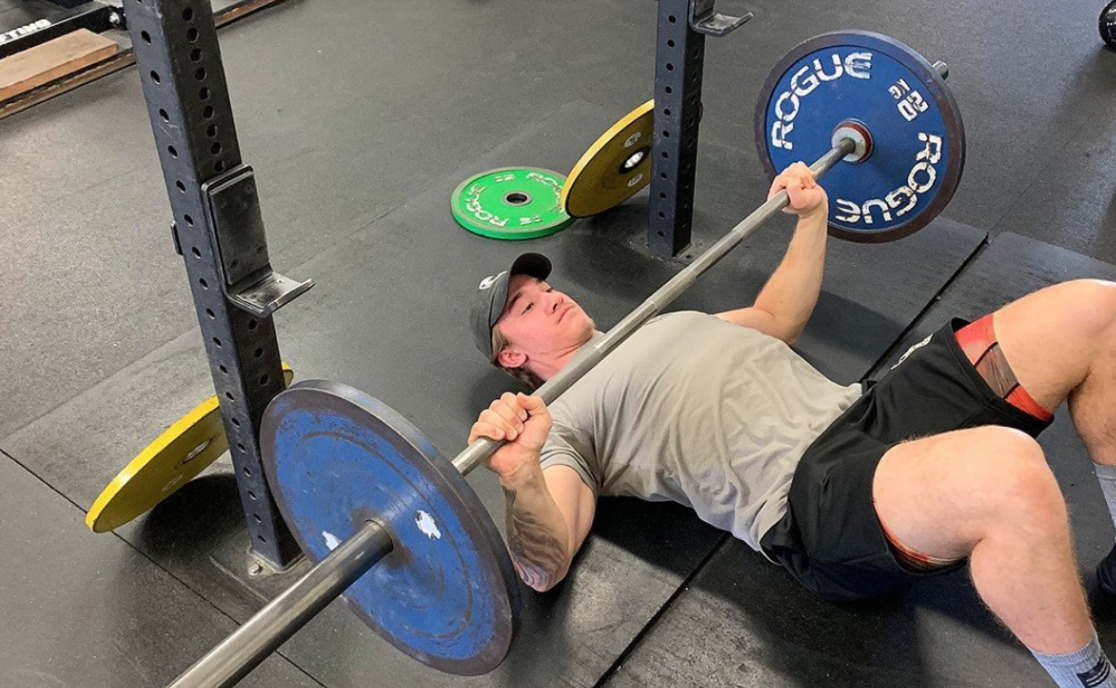Many people believe that training their chest requires solely performing the barbell bench press with heavy weights, but this approach is neither the most effective for building the chest nor for enhancing bench press strength. Incorporating exercises like the floor press can target different aspects of the lift and lead to better overall development and strength.
The floor press, as the name suggests, involves pressing weights while lying on the floor, which reduces the range of motion and focuses on strengthening specific parts of the lift.
The floor press limits the movement range, allowing you to concentrate on certain parts of the lift, particularly the lockout portion, which can help when transitioning back to the bench press. This variation also demands proper form to maximize its benefits.
Fitness experts from Men’s Health, such as Ebenezer Samuel, recommend specific cues to perfect the floor press, ensuring that you avoid common mistakes and get the most out of the exercise.
To perform the floor press, begin by sitting on the floor with dumbbells on your hips, then rock back and lift the weights to shoulder height with your upper arms at a 45-degree angle to your torso.
Maintain full-body tension by squeezing your shoulder blades, abs, and glutes, and keep your heels flat on the floor. Press the weights straight up while engaging your chest, and lower them back down with control, pausing at the bottom to avoid bouncing your arms off the floor.

Creating tension in your core and glutes is crucial during the floor press, as it helps to train your bench press effectively. Lower the weights slowly to maximize eccentric contractions, enhancing muscle growth and control. This controlled descent also allows you to handle heavier loads safely. When pressing upwards, be explosive to improve power and strength, particularly for the lockout phase of the bench press.
The floor press offers several benefits, including being shoulder-friendly due to the shortened range of motion, which prevents elbows from extending past the shoulders. This allows you to lift heavier weights safely, focusing on the lockout portion and potentially strengthening your standard bench press. Additionally, it provides a strong stimulus for muscle growth.
The floor press primarily targets the pectorals (chest muscles) and triceps, which assist in elbow extension. If you adopt the hollow hold position, you’ll also engage your core muscles.
However, it’s vital to prioritize form over heavy weights to avoid injuries. Maintain full-body tension, avoid arching your back, and ensure your elbows are at a 45-degree angle to your torso to protect your shoulders.
Common mistakes in the floor press include arching the back, relaxing on the floor, and bouncing the arms off the floor between reps. Focus on proper form, maintaining tension, and controlled movements to avoid these errors. The right form ensures safety and maximizes the exercise’s effectiveness.
To incorporate the floor press into your chest workouts, use it as a primary movement with heavy weights for 3 sets of 8 to 10 reps. Alternatively, as a secondary movement or from the hollow body position, use lighter weights and perform 3 sets of 10 to 12 reps. This approach will complement your standard bench press and enhance overall chest development and strength.
